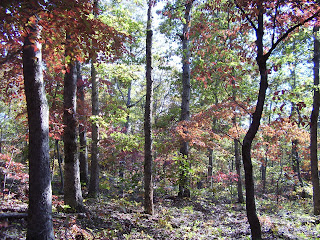
You would think fall and winter would be a slow time for a gardener. If you are trying to garden imitating nature though,
she is very busy in the fall. Seeds are
being broadcast, frosts are knocking over dead plants for mulch, fallen leaves
are forming a dense mat of composting material, hungry birds are scratching for
missed seed, extra rain is compacting mulch and seed down to touch ground and
humans and animals alike extend their walking border to look for roots and
missed nuts - further pushing seed to
ground. All this happens before hard
frosts come and breaks open the soil through heave, wraps seeds in frozen
moisture and takes a long inhale before spring.
It is amazing what frost heave will do to the soil when dying grass
loosens its grip. The soil is so light
and crumbly in the spring. Trying to
recreate nature and create insectaries that require no care during the summer, happens
in the fall. To recreate all of this
that nature does without strain requires extra work initially. Permaculture and
no-till gardening doesn’t mean no work, there is much mulching to be done and
in the beginning creating beds is a primary job. Creating insectaries is vitally important not only to the garden, but to the health of the environment around you. So many people create death zones by mowing acres and acres of grass.
 |
| Kittens after a hard day helping in the garden |
 |
| Fall garden tool box. Pool for hauling mulch and tools slides along the ground easily and pulled with the hips. The longer rope means I can also pull a cart behind me as well. |
To work on imitating this on a larger scale in areas where
there is an unbalanced amount of grass, I have tried many experiments. I’d
like to never mow again except for pathways and work spaces. But the beautiful patch of wildflowers that
grew the year after an area was cleared, disappeared the next year when I didn’t
mow before the spring because of so much grass.
Grass is great to harvest for mulching and nice on the pathways and work
spaces, but in the gardens and insectaries not so much. In the fall, the first step is killing grass
for new areas. Since maintaining soil
structure is one of my primary goals, we cover the grass to kill it as soon as
all the wildflowers in that patch have died back and the seeds are harvested. Never through tilling. When the grass is dead, preferably before the
snows come, remove the covering, scratch the surface, add the seeds back that
were harvested, and then cover with a light mulch (like with the grass
clippings or loose straw).
 |
| In area I want wildflowers, a layer of straw was put down and chickens are scratching the surface. Sometimes for a treat, I'll "seed" the area with sunflower seeds to keep them scratching longer. |
 |
| Mulching around Mullein volunteer in the garden. |
In the garden, the bigger stalks that make mulching
difficult are snipped at the base (NEVER
pulled) and piled along the fence for a snake shelter. They help keep the mice population down. The debris breaks down remarkably fast. The sun chokes (Jerusalem artichokes) are cut
leaving a foot or more of stem above ground so I can find them in the in winter through
the snow. The garden is heavily mulched
in the fall too and where mullein or other valuable plants are growing, I just
go around. In areas where roots will be grown 12-14" of mulch and other areas, just as much as I have, usually 6-10". When there is extra compost,
which is rare, it’s sprinkled in a layer before the mulch goes on. The compost piles are becoming their own
garden beds in place, so I don’t want to use that compost in other areas. Fertility in the non-compost pile garden beds
is done by soaking a little compost in water with egg shells and applying or
just shutting the bed completely down and making it the new compost pile for a
few months.
 |
| Bigger garden debris piled along garden's edge for snakes. |
|
 |
| Sunchokes (Jerusalem artichokes) trimmed up and mulched | for winter |
Mulch and composting material can be found by offering to muck out barns for
free. Grass clippings are all captured
and sometimes you can find really ancient abandoned rolls of hay for free. When driving to town we’ve collected a
trailer load of bagged leaves that were raked out of a park and I’d suppose a
deal could be worked out with the neighbors to collect their leaves. Happy fall mulching!





















No comments:
Post a Comment